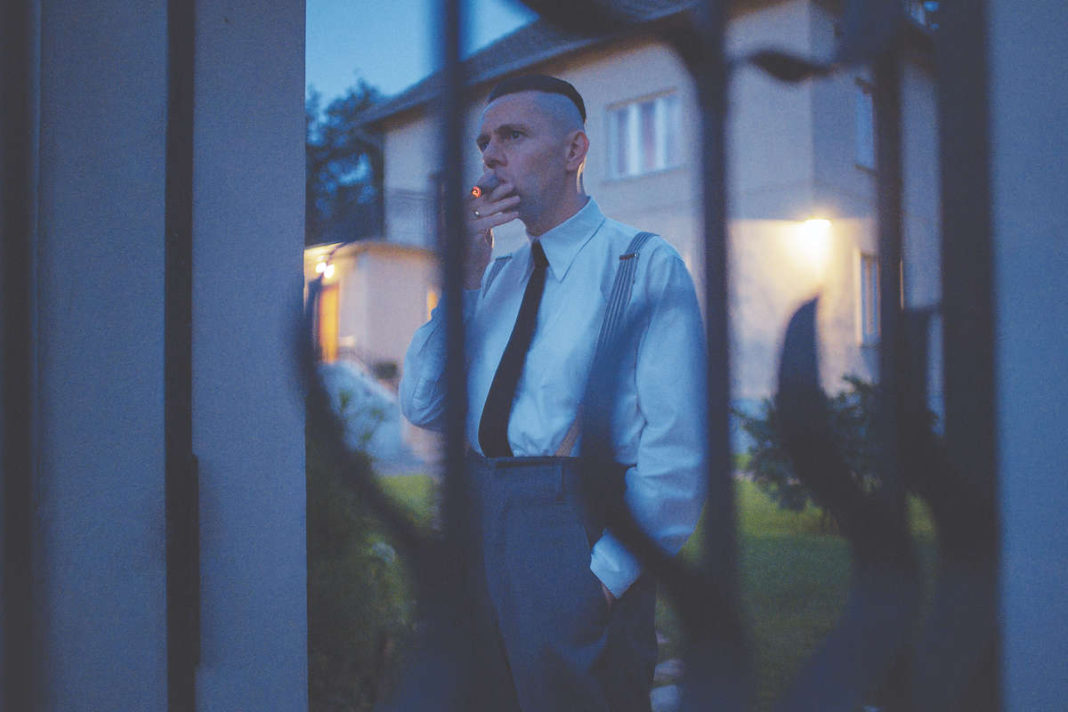The household of Rudolf Höss (Christian Friedel) and his wife Hedwig (Sandra Hüller), as depicted in the intensely compressed docudrama The Zone of Interest, is more or less typical of similar management-class European families during the stressful wartime years of the 1940s—with some significant irregularities.
First and foremost, Höss wears the uniform of the SS-Totenkopfverbände, the military/political force that administered the Third Reich’s concentration camps and conducted Adolf Hitler’s “Final Solution to the Jewish Question,” which among myriad other atrocities oversaw the murder of some 6 million “subhuman undesirables” during World War II. Höss (1901-1945), commandant of the Auschwitz-Birkenau death camp complex for four years, was responsible for a large percentage of the suffering.
In that context even the smallest details of daily life in the Höss home take on a sinister, vaguely nauseating new importance, in a grim parody of “typical” family sagas. For instance, after the children swim in the nearby river their mother vigorously scrubs their bodies, as if to remove any “Jewish impurities.”
Inside the hushed rooms of the house, located just outside a barbed-wire-topped wall, nervous servants anxiously fuss over the family, as if it were a matter of life and death. Occasional echoes of screams and gunshots come from over the wall. Höss hosts meetings with his ghoulish black-uniformed staff officers. The master also indulges in late-night extramarital sex—really an act of rape—in the basement with his frightened housemaid.
The sense of dread hanging over this fastidious German family is central to the adaptation of the late Martin Amis’ 2014 novel of the same name. However, in director/co-scenarist Jonathan (Under the Skin) Glazer’s choice to use Rudolf Höss’ actual name for the novel’s fictionalized commandant “Paul Doll,” the film tries to have its cake and eat it too. It tries a criminal by metaphor without showing his crimes.
Perhaps the filmmaker doesn’t trust Amis’ eerie distanciation effect, and is now seeking to shorthand the terror by taking the audience one cautious step closer to the awful truth. But never going all the way to the edge of the pit.
That’s a mistake. Amis’ book succeeds as an artful, interiorized portrait of pure malignance in the guise of business as usual—unannounced apologies to philosopher Hannah Arendt’s “banality of evil.” Glazer’s version, however, is a motion picture, and different rules apply. Glazer’s film assumes every member of the audience is familiar with the ghastly documentary footage of the camps, so only the slightest implied reference is necessary.
But the director has an obligation to inform the viewer that he understands the horrors of Auschwitz even while offering only fleeting, oblique glimpses of it. Metaphors alone don’t tell the whole story.
No declarative information—scenes of brutality or piles of corpses—is offered. The horror is mostly implied. The viewer is forced to read between the lines of the Höss family’s “happy” life in the midst of the great European slaughterhouse. Thus the settings have an odd flavor, as if we’ve entered into a nightmarish restaging of one of Jacques Tati’s whimsical comedies, with Monsieur Hulot suddenly replaced by a Nazi with a skull insignia on his cap.
Simply put, the weight of the Holocaust is too heavy for Glazer’s The Zone of Interest. It has trouble standing alone. With that in mind, here’s a concise list of films dealing with the Shoah and the Hitler regime’s crimes by means of stark reportorial imagery, without the aid of artfully implied violence or sanitizing. In the best of all possible worlds audiences would experience Glazer’s film only after grounding themselves in a few of these documentaries:
Claude Lanzmann’s Shoah (1985); Alain Resnais’ Night and Fog (1956); Sidney Bernstein and Alfred Hitchcock’s Memory of the Camps (2014); Yael Hersonski’s A Film Unfinished (2010); Claude Chabrol’s Eye of Vichy (1993); Andre Singer’s Night Will Fall (2014); Stuart Shulberg’s Nuremberg: Its Lesson for Today (1948); Rick Steves’ The Story of Fascism in Europe (2018); Marcel Ophuls’ The Sorrow and the Pity (1969); Leni Riefenstahl’s Triumph of the Will (1935); Frank Capra and Anatole Litvak’s The Nazis Strike (from the U.S. War Department’s Why We Fight series, 1943); and The World at War series, by Thames Television and the Imperial War Museum, UK (1973).
* * *
‘The Zone of Interest’ is in theaters.








